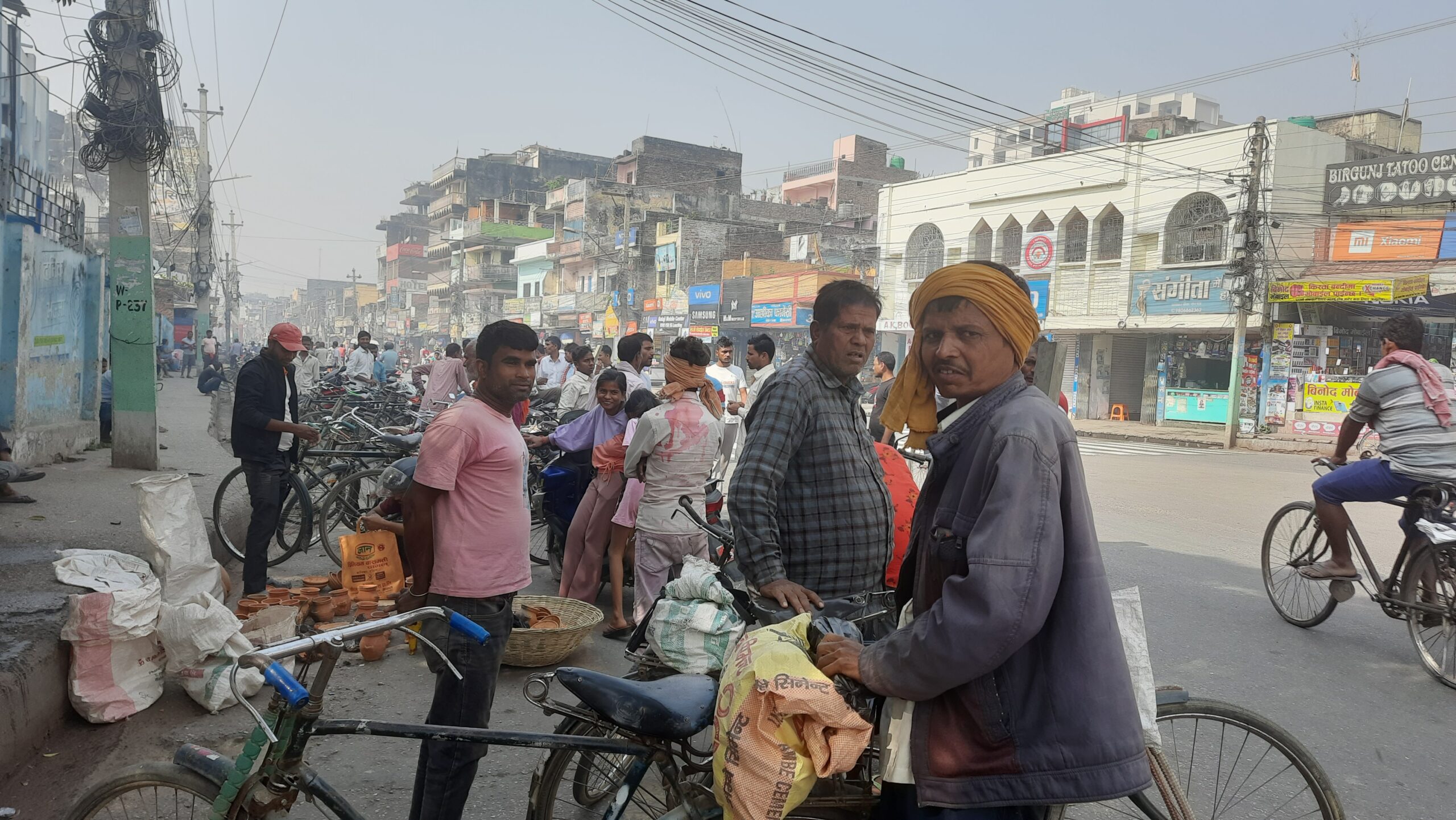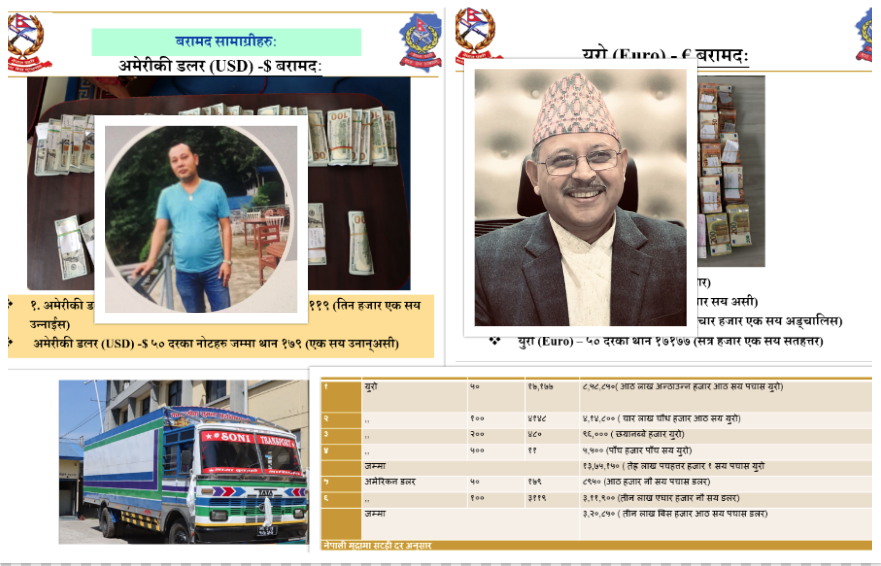Kathmandu. Due to air pollution, Kathmandu Valley has been listed as the world’s most polluted city for a few days. According to the ‘Air Quality Index’ data, it was listed as the most polluted city by midday on Thursday, with air pollution reaching 348 AQI.
With the increase in pollution, various government agencies, environmental experts and doctors have expressed special concern and requested people to be vigilant and not to leave their homes except for essential work. Deputy Prime Minister Prakash Man Singh, who also holds the responsibility of the Prime Minister, met with stakeholders on Thursday and discussed how to stop pollution and reduce its impact. The Ministry of Health and Population issued a press release on Thursday, urging people to be on high alert as air pollution in the Valley has increased.
According to the government-approved air quality index, 0-50 is considered good, 51-100 is considered moderate, 101-150 is considered unhealthy for sensitive groups, 151-200 is considered unhealthy, 201-300 is considered very unhealthy, and 301 or above indicates a dangerous level. Ministry spokesperson Dr. Prakash Budhathoki advised sensitive groups – children, the elderly, pregnant women and those with chronic conditions – to be especially vigilant as air pollution can cause asthma, lung diseases, eye problems, nose and throat allergies, skin problems, heart disease and long-term health problems.
Disaster management and climatologist Dr. Dharmaraj Upreti said that due to the weakening of the westerly wind, there is no rain and the air cannot move, so air pollution is accumulating everywhere. “The temperature is rising during this time, agricultural products are being burned, forest fires are occurring, and when there is no rain, the road dust is mixed with the atmosphere, and the westerly wind is weak, so there is no rain. If it had rained, the pollution accumulated in the atmosphere would have fallen to the ground and the pollution would have been removed,” he said. “Therefore, due to the effects of climate change, there will be changes in the weather conditions. If there is no rain, drought will increase and fires will increase. Pollution in the air will not be removed, which will increase pollution.”
Meteorologist Pratibha Manandhar of the Weather Forecasting Division under the Department of Water and Meteorology said that although there is a possibility of rain this week, the weather will remain cloudy. “There is a possibility of light winds from Thursday. But there will be no wind that will remove pollution,” he said. “There is also a possibility of rain next week. But since the division only makes forecasts, the forecast may not be accurate in the long term. Because it can change by that time.” Manandhar said that the lack of rain has increased environmental pollution and reduced visibility (transparency) and domestic flights from Tribhuvan International Airport have been affected.
According to Gyanraj Subedi, Director General of the Department of Environment under the Ministry of Forest and Environment, the pollution has increased due to the lack of winter rainfall for the past four years, the lack of proper rainfall even after the pre-monsoon, the increase in forest fires and other fires, and the failure to build environmentally friendly infrastructure. “Kathmandu is also bowl-shaped. When there is no rain, the pollution on the surface cannot fall down and the wind does not blow. Due to which the pollution has accumulated in the valley itself,” he said.
Air pollution high until Jestha The department has urged people to adopt high alert during this time, saying that air pollution is especially high in Nepal from Mangsir to Jestha. The department has stated that the main causes of air pollution are smoke emitted from industries, factories and vehicles, construction work, open burning of garbage and rotting remains, smoke emitted from houses, dust from roads and construction work, etc.
The department has requested people to take precautions as air pollution has a negative impact on human health, especially children, the elderly, asthmatics and pregnant women. Pollution due to fires Fire expert Sundar Sharma said that this year too, due to less rainfall in winter and the lack of rain even after the start of the pre-monsoon, the incidence of fires has increased, which is increasing environmental pollution.
“On Wednesday alone, 253 places were affected by fires. Although there is a risk of fires across the country, it seems that 45 districts, including Parsa, Makawanpur, Chitwan, Bara, and Udayapur, are particularly affected by fires,” he said. “We still face challenges due to the lack of adequate resources to control fires and the lack of manpower to control fires, especially among the youth. Until the fires are controlled, pollution will not be controlled either.” Heart patients are more affected by the recent increase in air pollution, which is particularly affecting heart patients, says cardiologist Dr. Ranjit Sharma.
“Heart patients have more breathing problems during pollution, heart attacks, uncontrolled blood pressure, diabetes, high cholesterol, chronic diseases, asthma patients should be more careful,” he said. “Pollution can affect them at any time, but since pollution is more in the morning, especially those with heart disease should be careful when going out of the house, and should only go out when necessary. Masks should be used.” Eye Problems Dr. Muna Kunwar, an ophthalmologist at the Tilganga Eye Institute, urged caution, saying that bacteria or viruses in polluted air can infect the eyes and cause problems such as conjunctivitis (eye inflammation), and pollutants in the air can affect the tear-producing glands, causing itching, burning, and redness of the eyes.
“Current pollution has caused blurred vision when the eyes become itchy or dry. Pollution can cause allergic reactions that cause itching, swelling, and excessive watering of the eyes. Patients who come here also say that their eyes are burning,” he said. “Wear glasses or sunglasses in areas with high pollution, wash your eyes frequently with clean water, spend less time in pollution-affected areas, avoid going out of the house as much as possible, use medicine if your eyes are dry, eat nutritious food, and consult a doctor if the problem worsens.”
Skin problems too Dermatologist Dr. Prajjwal Pudasaini suggested that people should be very vigilant at such times, saying that pollution can cause various types of skin problems. “During times of increased pollution, chemicals and dust particles can cause skin allergies. This can cause the skin to become red, burn, or have rashes. Acne can also occur. The skin’s glow can be lost,” he said. “Pollution can reduce the skin’s immunity, which can lead to various types of infections.” Dry and itchy skin can also lead to skin cancer.”
Similarly, Pudasaini said that air pollution affects the skin of people who spend a lot of time in the sun and wind or work, and that pollution causes the skin to wrinkle and look old at a young age. “To protect the skin from pollution, it is necessary to regularly wash the face with clean water, avoid going out of the house as much as possible, wear sunscreen when going out, wear a mask when going out, and take proper care to protect the skin from pollution,” he said. “If skin problems persist for a long time, a dermatologist should be consulted.”
Pregnant women affected Dr. Jitendra Pariyar, head of the Department of Gynecology and Obstetrics at the Civil Servants Hospital in New Baneshwor, Kathmandu, says that air pollution affects pregnant women more than the general public. “Pregnant women should not smoke, just as smoking affects the child’s intellectual development, similarly pollution also affects the unborn child,” he said, “The state should formulate a policy to reduce pollution and implement it effectively. During such times, pregnant women should not go out of the house as much as possible, and if they have to go out, they should use masks.” Environmentalist Bhushan Tuladhar suggested declaring an emergency along with public awareness and said that the government should be ready to declare a state of emergency by looking at the increase in pollution.
“Nowadays, the air pollution level has crossed 300 AQI at times. “There is a standard to declare a disaster as soon as the pollution level crosses 300,” he said. “Now, there is no need to declare it when the pollution level fluctuates. But pollution is increasing. How to be vigilant? If pollution continues to increase along with widespread public awareness, a state of emergency should also be declared.”
What is the right to a clean environment? Senior advocate Prakash Mani Sharma, who is also an expert in environmental law, commented that human rights have been violated by the lack of implementation of the fundamental right of citizens to live in a clean environment in countries with constitutional supremacy. “Pollution is increasing at a rapid pace. Although the constitution provides the right to live in a clean environment, citizens are not being able to guarantee their fundamental rights,” he said. “And are the fundamental rights provided for in the constitution only for the state administrators? Have citizens been able to guarantee them? Now there should be an investigation into judicial impartiality.” Article 30 of the Constitution of Nepal guarantees the right to a clean environment.
Article 30, Clause (1) of the Constitution of Nepal provides for the right of every citizen to live in a clean and healthy environment. Article 30, Clause (2) of the Constitution of Nepal ensures the right of the victim to receive compensation from the polluter for the damage caused by environmental pollution or degradation in accordance with the law. Article 30, Clause (3) states that this Article shall not be deemed to prevent the making of necessary legal provisions for a proper balance between the environment and development in the development work of the nation.
The state policies mentioned in Part 4 of the Constitution include environmental balance, environmentally sustainable development, preparedness, rescue, relief and rehabilitation to minimize damage caused by natural disasters, conservation, enhancement and utilization of natural resources, environmentally friendly development, and increased participation in development, among others. The system is included. What is the policy system? The Air Quality Management Action Plan for Kathmandu Valley, 2076 BS also states that the government-determined AQI value of more than 300 will be considered a disaster.
To prevent this disaster, the action plan mentions stopping garbage burning, expanding the use of bromine and vacuum cleaners to clean roads, and issuing public notices to children, senior citizens, and the sick to take special precautions. According to the National Environment Policy, 2076 BS BS, the government has a strategy to prepare and implement national standards for water, air, soil, sound, electromagnetic waves, radioactive radiation, and prevention of hazardous chemical pollution to reduce pollution.
The strategy mentions that air, water, and sound quality will be mapped by establishing and operating quality measurement centers in major cities, industrial establishments, and other areas at risk of pollution. “Provisions will be made for the treatment of polluted water coming from industrial and other sectors. Environment-friendly technology will be implemented to manage the polluted smoke, dust, and water emitted from industries and other businesses,” the policy states. “To reduce indoor air pollution, devices such as solar stoves, electric stoves, biogas, improved stoves, and chimneys will be promoted.
Emphasis will be placed on the construction of energy-efficient buildings.” National and international study reports are coming out that the air in the Kathmandu Valley is truly harmful and its quality is deteriorating rapidly. In a study conducted in 180 countries by the public ‘Environment Performance Index 2018’, Nepal is among the five countries with the highest air pollution. The Department of Environment has established pollution measurement centers in Dhulikhel, Pulchowk, Ratnapark, Tribhuvan University Kirtipur, Saibu, and Sainik Vidyalaya Bhaktapur, targeting the valley. Arrangements have been made to transfer data to the central system and for the general public to get information about the pollution situation.
Long-term strategy needed Environmentalist Bhushan Tuladhar said that environmental pollution increases every year during winter and pre-monsoon, and said that a long-term strategy for pollution reduction is needed across the country to reduce it and its effective implementation is necessary. “The government should be ready to do what to do immediately when pollution is increasing now. We should work to control wildfires, prevent open fires, increase public awareness, and take strict action against vehicles that emit smoke,” he said. “In the long term, we should promote electric vehicles and give priority to improved stoves.
An air quality action plan should be prepared immediately across the country.” The National Census 2078 shows that 51 percent still burn firewood and three percent still burn wood. “Indoor pollution affects women and children even more,” Tuladhar said, adding, “The latest study shows that 48,500 people die annually in Nepal due to air pollution.” Instructions not to pollute: Gyanraj Subedi, Director General of the Department of Environment under the Ministry of Forests and Environment, said that although those who pollute the environment have been instructed not to pollute from now on, strict action has not been taken.
“We have given instructions and suggestions to those who have polluted, so that they do not pollute. We are not able to take action against the polluters,” he said, “We will also take action against those who do not follow the instructions to reduce environmental pollution.” According to Director General Subedi, the department has given priority to raising public awareness widely to reduce pollution, and instructions and suggestions have been given to those who cause pollution. The department has suggested that since setting fires is a public crime, such acts should not be committed, household solid and plastic waste and agricultural residues should not be burned, vehicles should be regularly maintained, industries should use clean energy in factories and kitchens, and smoke and dust from roads and construction should be properly controlled. RSS
































प्रतिक्रिया दिनुहोस्